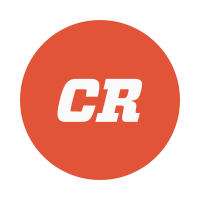Our world revolves around creating dividing lines. It helps us make order out of chaos. We divide up continents into nations, nations into states, states into cities. We split up groups of humans to create demographics and target markets. We divide our lives by years, months, days and moments.
There are dividing lines in the tech world as well—what is socially acceptable or not, and how that evolves over time. Sometimes it evolves slowly, sometimes rapidly. This evolution helps us determine if technology is acceptable, meeting our desires or being intrusive.
Innovators cross lines as they develop new products and services. Push new technology too far and it alienates users, forcing them out of their comfort zone. Play it too safely, no one might notice or care.
When is something intrusive, when is it acceptable and when does it rest in the middle? These dividing lines are created by use cases. It must meet a need.
More than twenty years ago, heads would turn if someone were to walk down the sidewalk talking on a phone. It wasn’t commonplace yet. Slightly more recently, signs were posted everywhere about cell phone conversations not being allowed in waiting rooms or restaurants. Both seem like ancient history now as mobile devices can be found everywhere we live and work.
It’s a similar situation with drones. Use one to shoot a video over a spectacular waterfall and it goes viral on social media. However, use it to get a closer look at a wildfire and it might cause firefighting planes to be grounded. It’s no surprise that the Federal Aviation Administration continues to tighten restrictions about flying drones. Same technology, different interpretation because the dividing line is being drawn as to what is socially acceptable. Or, in this case, safe.
In digital media, the Apple Watch is revolutionizing the way we interact with each other via technology. But the potential for the product has little to do with telling time. Just as a phone has less to do with talking and more to do with typing and reading, its design and technology evolved as a result. The same will be true for the Apple Watch. Its potential will be realized once developers align it with consumer behavior.
When technology is developed without a clear use case, it’s difficult to know if it has crossed the dividing line of what is acceptable. Take artificial intelligence. When a robot can make smarter decisions than humans, where do we draw the dividing line between acceptable and unacceptable use?
Traditionally, innovation stems from an idea of use. Develop the best solution to an existing problem and solve it. More frequently today we’re creating technology and then trying to determine a meaningful use for it. As this trend continues, the determination is separated by a blurry dividing line at best. In other words, how can we know if it’s acceptable if we don’t even have a use for it yet?
The primary challenge is to determine if and how technology contributes to growth. With more innovation, we’ll need to grow more comfortable with ambiguity. Develop it. See how to use it. Determine what is acceptable and what isn’t.
Technology alone won’t be the answer to a problem; it will be up to us to decide if it fits within our ideals of what is or isn’t acceptable. In short, technology will be the question instead of the answer.
Photo by Jaren Wilkey/BYU. © BYU Photo 2014

